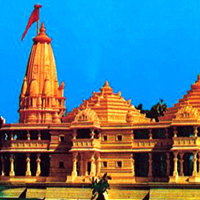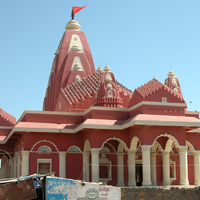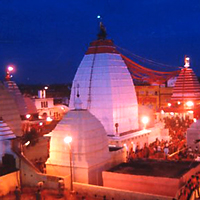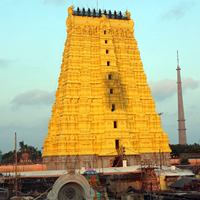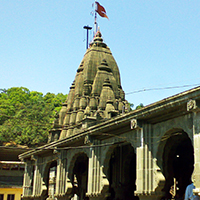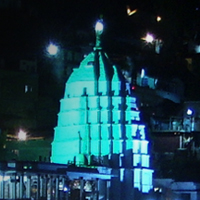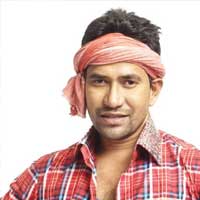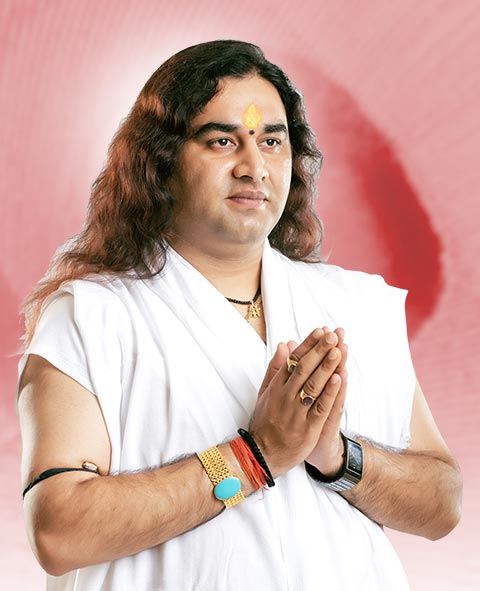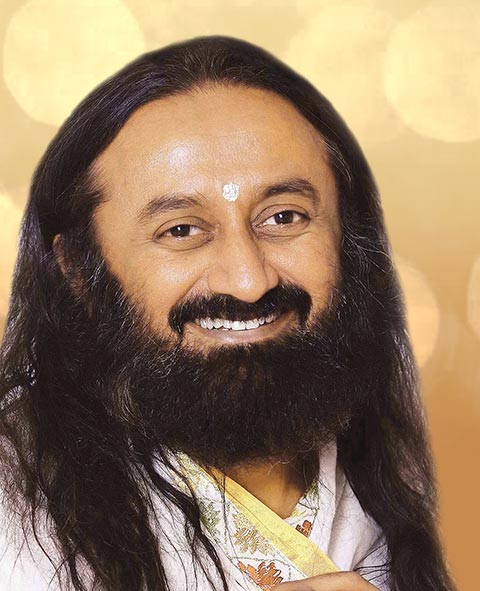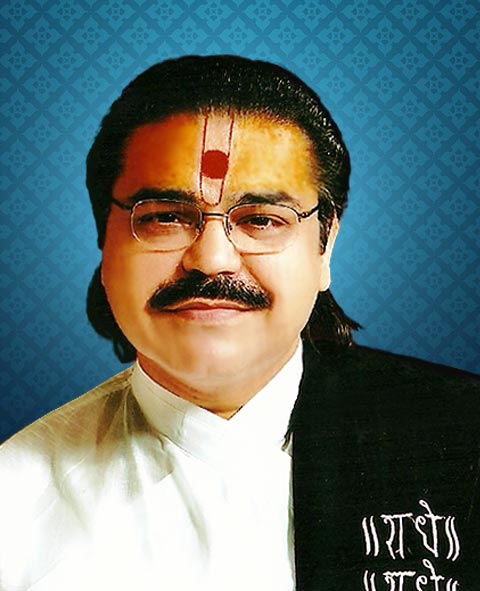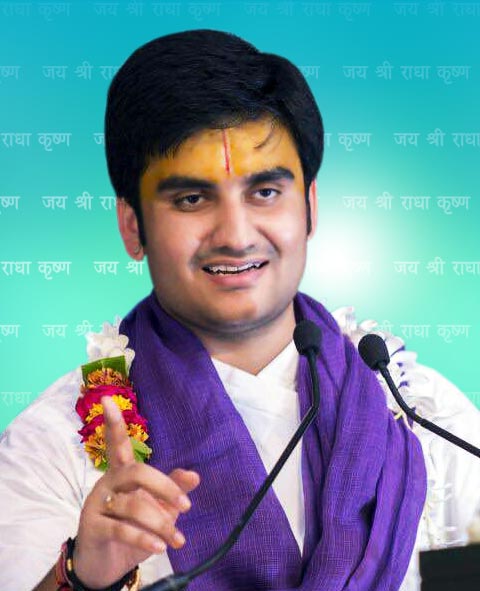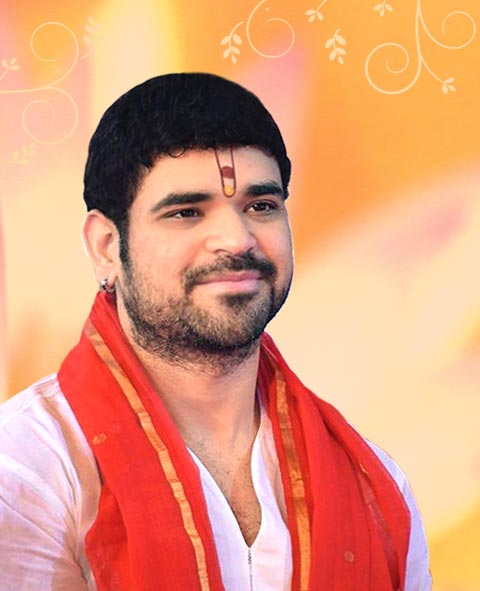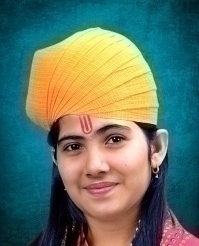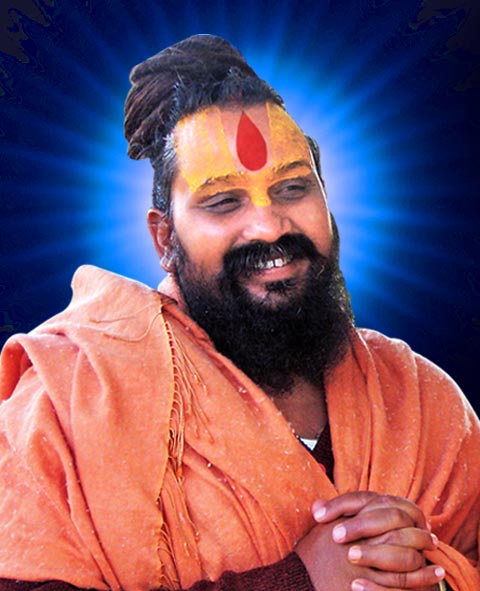Browse By Tample

Venkateswara Temple Tirumala
Bharat, the land of spiritual bliss is strongly believed to be pervaded by the Lords, their deep imprints and a sense of divine presence, eternally available in the environment around.
The presence of deities is often felt in the structures called temples, which are the epitomes of the great, age old, rich Hindu Sanatana Dharma. Among the galaxy of temples, which are also the architectural marvels located in our country, the hill shrine of Tirumala is accredited as being the most visited temple in India and also in the world as a whole. Located on the picturesque Seshachalam Hill Ranges, this temple occupies a unique place in our great land of holy shrines.
TEMPLE LEGEND
The “Temple Legend” is made out of references from a range of ancient scriptures such as Varaha Purana, Padma Purana, Garuda Purana, Brahmanda Purana, Markandeya Purana, Harivamsa Purana, Vamana Purana, Brahma Purana, Brahmottara Purana, Aditya Purana, Skanda Purana and Bhavishyottara Purana.These extracts describe the sanctity and antiquity of the deity, temple and the hills around Tirumala, besides the numerous teerthams, streams and springs that abound them.
The legends taken from the Venkatachala Mahatmya and the Varaha Purana, pertaining to the manifestation of the Lord at Tirumala, are of particular interest.
According to the Varaha Purana, Adi Varaha manifested himself on the western bank of the Swami Pushkarini (temple tank), while Vishnu in the form of Venkateswara came in to reside on the southern bank of the Swami Pushkarini.

RESTORATION OF EARTH BY ADI VARAHA
During the eight thousand yugas (the time equivalent to a day and night for Brahma, the Creator), there was a raging fire, and everything on Earth was reduced to ashes. Man had to forsake the Earth and seek refuge in Janaloka.
At the approach of night (for Brahma), Vayu, the Wind God, blew furiously. Huge clouds were formed, there was a torrential rain, which resulted in Pralaya Kalpa (the Great Deluge). The Earth sank into the Patala loka, and remained in that state for a thousand years (during a part of that night of Brahma).
SRI ADI VARAHA BRINGING UP THE EARTH ON HIS TUSKS
Sri Maha Vishnu, who decided to save Mother Earth, assumed the form of Adi Varaha, a giant wild boar and proceeded to Patala loka. He fought a fierce duel with the demon king Hiranyaksha and killed him. He then splashed the water and brought the Earth up by carrying it on his huge tusks.
Brahma, the Devas and the sages extolled Adi Varaha's virtues, by chanting the Vedic mantras. They prayed to him to re-establish the Earth as before. Adi Varaha obliged them, and called upon Brahma to recreate the Universe. He expressed his desire to reside on the Earth to protect its people. He commanded his vehicle, Garuda to fetch Kridachala (a massive natural hill with lofty peaks, embedded with gold and precious stones resembling Adisesha in shape) from Vaikuntam.
Garuda brought Kridachala and placed it on a sacred spot, the East of Swami Pushkarini, chosen by Adi Varaha himself. Adi Varaha stood within the divine vimana of Kridachala, which glittered with many splendorous gem-studded gopuras.
Brahma and the other holy personages requested the fearsome-looking Adi Varaha to assume a tranquil and composed look, and rest on the hill to protect the mankind and grant boons to people unable to reach God through Dhyana Yoga (meditation) and Karma Yoga (doing one's own duty).
Adi Varaha with his consort Bhudevi appeared with four arms and a blissful countenance, adorning an array of jewels. He took a divine decision to stay at Venkatadri, under a divya vimana, to answer the prayers of the devotees.
CONTEST BETWEEN ADISESHA AND VAYUDEVA
During the Dwaparayuga, Vayudeva (the Wind God) went to Vaikuntam to pay his obeisance to Lord Sri Vishnu. The Lord was reclining in the company of Maha Lakshmi and the doorway was guarded by Adisesha. Vayudeva was incensed when Adisesha prevented him from entering Sri Vishnu’s holy abode resulting in a fierce battle between them.
When Lord Vishnu intervened, each was boasting of his superior valour and supreme might. To test who was stronger, the Lord suggested that Adisesha should encircle the Ananda hill, an off-shoot of the Meru Mountain on its northern side, while Vayudeva should blow hard to dislodge the Ananda hill from Adisesha's strangle hold. The contest waxed furiously, and as the World trembled, Brahma, Indra and the other deities prevailed upon Adisesha to yield victory to Vayudeva for the welfare of the world, as a whole.
Obliging them, Adisesha released his hold on the hill, with the result, Adisesha and the Ananda hill were together blown away to the banks of the river Swarnamukhi. As Adisesha was crestfallen over his defeat, Lord Brahma and the others appeased him by saying that he would be integrated with the hill Venkatadri and would become the abode of Lord Vishnu. Adisesha then metamorphosed into the vast Seshadri hill range, while his hood manifested itself into Venkatadri, the abode of Lord Sri Venkateswara, his trunk portion turned out to be Ahobila supporting Lord Narasimha and his tail housing Srisailam bearing Lord Mallikarjuna (Lord Siva).
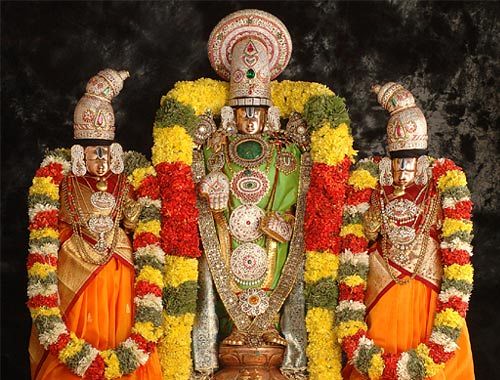
TEST OF THE THREE DIVINITIES
At the commencement of the Kali Yuga, Lord Vishnu left Venkatadri for Sri Vaikuntam, his divine abode. Lord Brahma was saddened over the Lord’s departure and asked Narada to persuade Vishnu to return to Venkatadri. Narada then went to the banks of the River Ganga, where several rishis were performing a holy sacrifice. The rishis could not decide as to whom they should dedicate the fruit of their yaga. Bhrigu, one of the rishis took the task upon himself for testing who among the three chief divinities-Lord Brahma, Lord Vishnu and Lord Shiva, is the supreme Lord to receive the divine boon of the Yaga.
SAGE BHRIGU AT SATYALOKAM
Sage Brigu first went to Satyalokam, the abode of the three-headed Lord Brahma the creator. Brahma was found busy chanting the Vedas with one face, uttering the name of Narayana with another and looking at Goddess Saraswati with the third. He took no notice of Bhrigu’s arrival. Bhrigu resented by the lack of courtesy from Brahma, left Satyalokam in a huff.
BHRIGU IN KAILASAM
Bhrigu then proceeded to Siva's abode (Kailasam) as a part of his holy mission. Here too, he found Lord Siva absorbed in sporting with his consort Parvathi Devi taking no notice of his visit. Lord Siva also became indignant at Bhrigu’s intrusion into his privacy which further enraged the sage.
BHRIGU IN VAIKUNTHAM
Finally, Bhrigu went to Sri Vaikuntam, the abode of Lord Vishnu and found Vishnu and Sri Maha Lakshmi reclining on Adisesha unmindful of his arrival. Disgusted over this, Bhrigu, known for his intemperate nature, kicked Lord Vishnu on the chest, where Sri Maha Lakshmi was reclining. Vishnu immediately got up, massaged rishi's foot and enquired if his foot was injured when he kicked on his hard chest. Taken aback over Vishnu’s attention and cool composure, Bhrigu returned to the rishis and advised them to dedicate the fruit of their sacrifice to Vishnu, as he deserved it best, among the divine Trinity.
But, Sri Maha Lakshmi was furious over Bhrigu for kicking the holy spot and her favourite abode - the bosom of the Lord. She left Vishnu in a fury and went on to stay at Karavirapura (now Kolhapur in the state of Maharashtra) to commence a deep penance. Unable to bear the solitude after Sri Maha Lakshmi’s departure, Vishnu left Vaikuntam in search of her and wandered across the forests and hills.
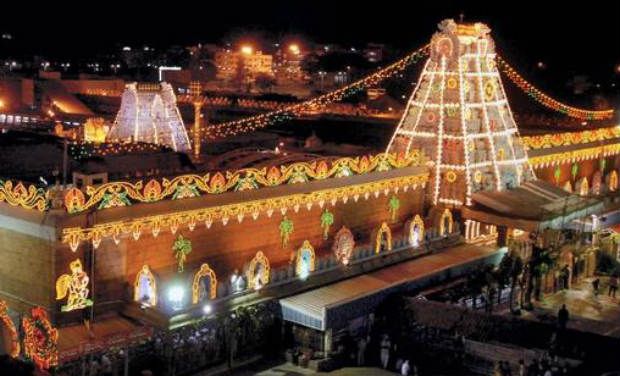
MANIFESTATION OF LORD VENKATESWARA ON VENKATADRI
Frustrated over not finding his consort anywhere, Lord Vishnu took an ant-hill on Venkatadri under a tamarind tree as a dwelling place, besides a Pushkarini. Lord Brahma and Lord Shiva, taking pity at the plight of Lord Vishnu, made up their mind to serve him in the guise of a cow and calf. Surya – the Sun God, informed Lakshmi of this and requested her to sell the cow and calf to the king of the Chola country assuming the form of a cattle care-taker. The Chola king sent the cow and its calf to graze on the Venkata Hill along with his herd of other cattle. Discovering Lord Vishnu in the ant-hill, the holy cow everyday emptied her udder into the ant-hill and thus fed the Lord. Over a period of time, the queen noticed that the cow was not yielding any milk and chastised the cowherd severely for its peculiar behaviour.
The cowherd trying to investigate the cause, followed the cow and discovered to his utter shock that the cow was emptying her udder over the ant-hill. In his anger, the cowherd aimed a blow with his axe on the head of the cow but accidentally hit the Lord Vishnu who rose from the ant-hill to receive the blow and save the cow’s life. On seeing Lord Vishnu bleeding, the cowherd fell down and died. On the death of the cowherd, the cow returned to the king with blood stains on her body, bellowing in the presence of the Chola King. An anxious king followed the cow to the scene of the incident, the ant-hill, where the King found the cowherd lying dead on the ground.
While the King stood wondering how it had happened, Lord Vishnu rose from the ant-hill and cursed the king to become an Asura (Demon) for the fault of his servant. Entreated by the king who pleaded innocence, the Lord blessed him by saying that his curse would end when he was adorned with the Kireetam (crown) presented by Akasa Raja at the time of his marriage with Sri Padmavati. To atone the sins of raising the axe against the Lord, the cowherd's atma (spirit) received the rare boon from the Lord, which is that, he and his descendants enjoy the privilege of opening the main door in the Lord's sanctum sanctorum in due course.
GODDESS PADMAVATHI
In course of time, the Chola king was reborn as Akasa Raja and though he ruled well, he had no children much to his displeasure. As part of the yaga, he was ploughing the fields, he found a baby in a lotus flower and named her Alarmel mangai (Lady born in Lotus petals) and adopted her as his daughter. Lord Vishnu reincarnated as Srinivasa (or presented himself after penance in the ant-hill) as the son of an elderly woman-saint Vakula Malika Devi. Vakula Devi was Yasoda in her previous birth, Lord Krishna's foster-mother and was unhappy in that life for not seeing his marriage. As per the boon received from Krishna, she was reborn as Vakula Devi and enjoyed the rare spectacle of witnessing the celestial wedding of the divine couple.
In course of time, Princess Padmavati grew up into a beautiful maiden and was visited by Saint Narada. On reading her palm, he foretold that she was destined to be the spouse of Lord Vishnu himself. In due time, Lord Srinivasa on a hunting spree was chasing a wild elephant in the forest. The elephant led him into a garden where Princess Padmavati and her maids were playing. The sight of the elephant frightened them and their Princess. When Lord Srinivasa appeared in front of the Elephant, it immediately turned round, saluted the Lord and disappeared into the forest. Lord Srinivasa noticed princess Padmavathi and enquired about her from her maids. Enthralled by her bewitching beauty, Lord Srinivasa lost interest in other activities and told his foster mother Vakula Devi about his love for Padmavathi. He also revealed his identity as Lord Vishnu and narrated her about her past life as his foster-mother then as Yasodha.
MARRIAGE OF LORD SRINIVASA AND GODDESS PADMAVATHI
Vakula devi left her hermitage to approach Akasa Raja with the marriage proposal of marriage between Lord Srinivasa and Padmavathi. In the mean time, an anxious Lord Srinivasa came to the city in the disguise of a lady fortune-teller. Princess Padmavathi also lost her heart to Lord Srinivasa and fell ill after returning to the palace. Unable to diagnose her ill-health, the maids invited the fortune-teller into the palace to foretell the future of their princess. When the Lord in the guise of a lady fortune-teller revealed that Padmavathi was born with a cause to marry Lord Vishnu in his current avatar as Lord Srinivasa, she recovered and regaled in joy. As the king heard of this news, Vakula revealed her to the King and asked for his daughter's hand in marriage to her son, Lord Srinivasa. The overjoyed king gleefully agreed and his advisor Bhrihaspati wrote the invitation for the wedding between the two celestial beings of Srinivasa and Padmavathi.
Lord Srinivasa called for a conference of the Gods to declare his marriage with Princess Padmavati.
According to mythologies, the Lord also obtained a huge loan from Kubera, the god of wealth, towards meeting the expenses for the divine and grand wedding matching his stature as the supreme lord of the universe.
LORD SRINIVASA TURNS TO LORD VENKATESWARA
In about six months after this celestial marriage, Goddess Maha Lakshmi who left the lord, in the past in a huff after sage Bhrigu kicked Lord Vishnu on his chest, her dwelling place, came to know that her husband married again and came to see him in disbelief.
It is said that the Lord turned himself into a granite statue right in front of his two spouses when they together encountered him over his remarriage. Lord Brahma and Lord Shiva then appear before the confused queens and explain the main purpose behind all this complex episode, the Lord's desire to be on the holy seven hills for the emancipation of the mankind from the perpetual trials and tribulations of Kali Yuga. Goddesses Lakshmi and Padmavathi also turn into stone idols expressing their wish to be with their Lord eternally. Goddess Lakshmi stayed with him on the left side of his chest while Goddess Padmavati rested on the right side of his chest.
